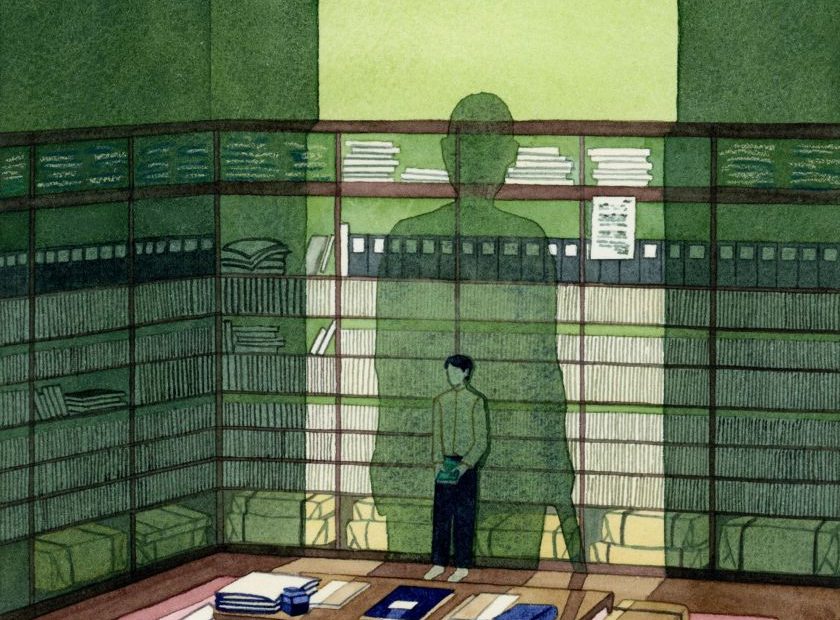Making time and space to consider things is a theme in her illustrations and is integral to Joanna Blémont’s creative process.
The world seems noisy and troubling at the moment, which is why it needs young artists like Joanna Blémont and her ‘silent watercolours’. The tone and content of her illustrations command us to slow down, take a breath, and gaze into the tranquillity of the spaces she conjures.
“I’ve always been drawn to capturing empty spaces,” says Joanna. “Growing up in Charleroi, an industrial city in Belgium, I developed an awareness of the quiet, forgotten buildings now overtaken by weeds. My father worked in an industrial estate surrounded by vast, vacant spaces and unoccupied buildings with large parking lots. The isolation brought on by lockdown amplified this existing interest.”
Artwork entitled Ghost
Now based in Edinburgh, Joanna’s works, which she describes as ‘silent watercolours’, often consist of several paintings that form a sequence. Changes occur in the space she depicts, enabling us to sense more about its character, with a great deal left to the viewer’s interpretation. How do we feel if the colour changes within the space? What does that mean when a detail is highlighted?
“I think of the silence in the work as a pause before something is about to take place, something hidden from the viewer but felt,” she continues. “That’s why I avoid depicting specific faces and people and opt for figures and shadows. I also stay away from completely defining spaces. I find that sequence allows me to create a rhythm where quiet apprehension is conveyed. Something is about to unfold but remains unknown.”
Desert Progression
Hidden Figure
Joanna’s contemplative approach made her the ideal artist to create visuals for the Mo Low event by Stéréolux in April in Nantes, France. The intention was for visitors to step out of their daily routines, slow down and reflect.
Joanna enjoys collaborating with art directors who understand her work but can give constructive feedback and point to her blind spots. One example she cites is her project to illustrate Yukio Mishima’s short story From The Wilderness for The New Yorker. It’s the lead image we’ve used with this piece. More detailed than many of her other works, it nonetheless showcases her talent with watercolour.
“It’s a medium that requires you to be precise and applied in the process while bringing an element of unpredictability. The granulation brings a pleasant sensory feel to the work, which is often viewed on a screen and not in print. The textures created by the granulation and the paper itself remind me of the physicality of a real page,” she explains.
Edinburgh Herbarium
Joanna’s soon-to-be-released work for a zine called Comatose, funded by Creative Scotland, enabled her to explore the context of dreams, how dreams change, and how they might blur into reality. Joanna has been keeping a journal of her dreams since 2019, using it to inform her MA project at the Edinburgh College of Art.
“Receiving funding meant I could work in a slower process-focused way. I have been avoiding using coloured pencils for commissioned work for efficiency reasons, and getting the time to explore mark-making with them and develop more time-consuming drawings has been fruitful. It informed my current work and brought something new to commissioned pieces. Before starting Comatose, I felt like I was revisiting the same ideas and sequences, but this project has sparked new directions and refreshed my creative practice,” she says.
Riso printed at Out of the Blueprint in Edinburgh, Comatose will be available at other riso studios, zine libraries, and online starting in late November. Joanna’s other clients include The New York Times, The Skinny, The Philosopher’s Magazine and Lumière Noire Records.
Washing Line
